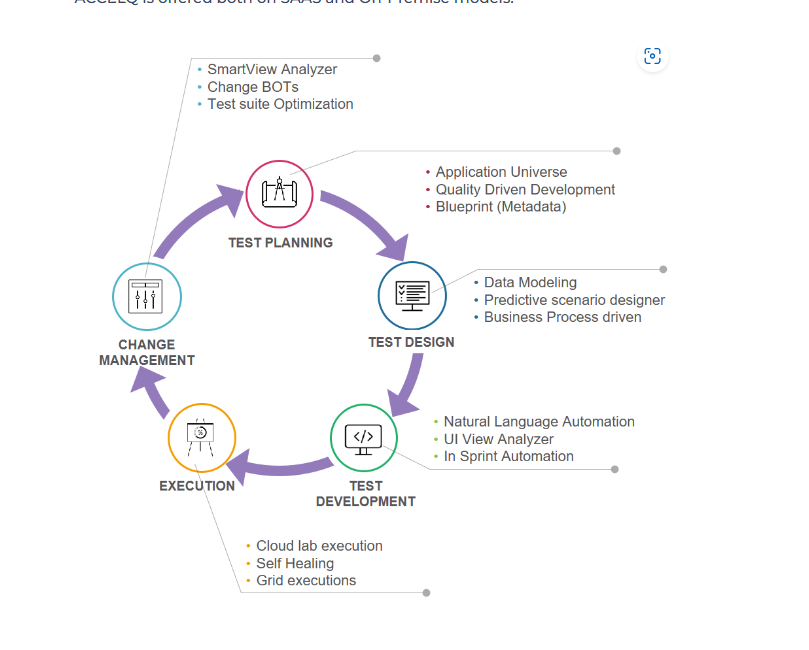AccelQ aims to address the challenges in the software testing lifecycle by providing a platform that enables collaboration among cross-functional teams, including developers, testers, and business analysts.
Some key features and aspects of AccelQ include:
- Codeless Test Automation: AccelQ emphasizes a codeless approach to test automation, allowing users to create and execute tests without the need for extensive coding skills. This can potentially accelerate the test creation process and make it more accessible to individuals with varying technical backgrounds.
- Natural Language Processing (NLP): The platform incorporates natural language processing capabilities, enabling users to define test scenarios and requirements using plain language. This can enhance communication and collaboration between technical and non-technical team members, fostering a better understanding of testing requirements.
- Continuous Testing: AccelQ supports continuous testing practices, facilitating the integration of testing into the continuous integration/continuous deployment (CI/CD) pipeline. This integration helps ensure that software is tested consistently throughout the development lifecycle, reducing the risk of defects reaching production.
- Visual Validation: The platform may include visual validation features that allow testers to compare the actual application interfaces with expected designs. This can be particularly useful for detecting visual discrepancies and ensuring that the user interface meets the specified requirements.
- Test Data Management: AccelQ may offer capabilities for managing test data effectively, allowing users to create, maintain, and use test data sets for various testing scenarios. This can contribute to more comprehensive test coverage.
- Collaboration and Reporting: AccelQ provides collaboration features that enable team members to work together on testing activities. Additionally, it may offer reporting and analytics tools to track and analyze testing progress, identify trends, and make data-driven decisions.
